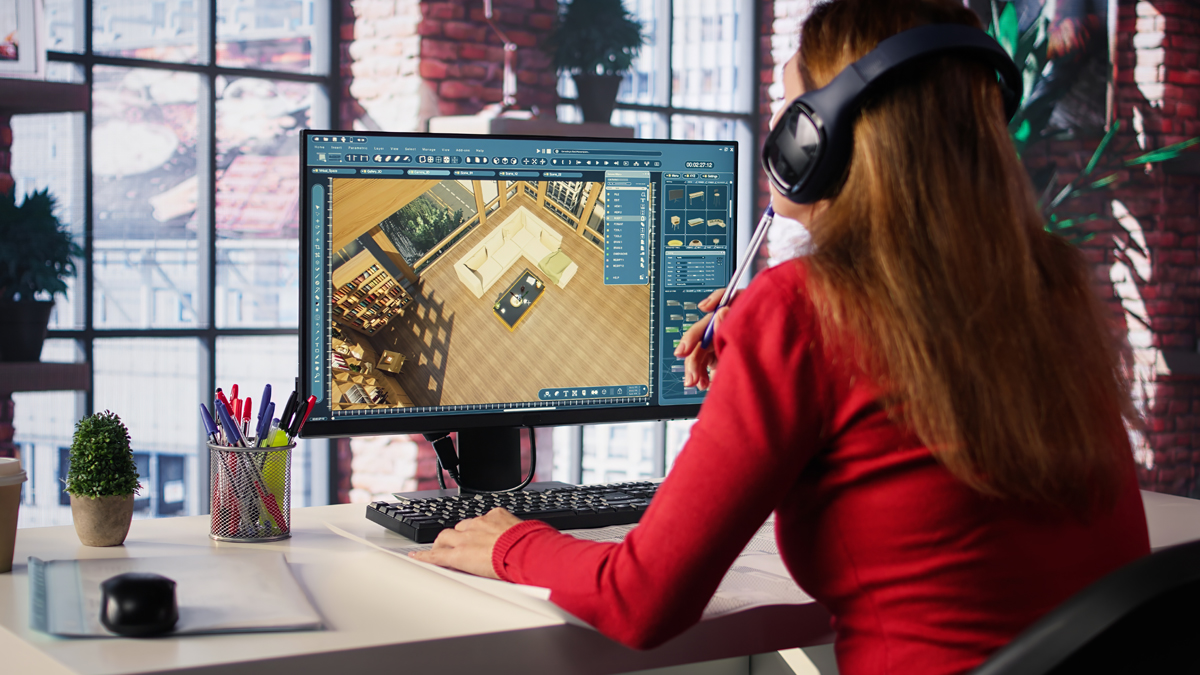Virtual production leverages real-time technologies like LED volumes and in-camera effects to give directors immediate visual feedback, reducing the gap between imagination and reality. When combined with advanced CGI pipelines, this synergy accelerates workflows, enhances creative control, and raises the bar for visual fidelity. By exploring key innovations from AI-driven asset creation to cloud-based collaboration, this article will highlight how these techniques work together to deliver richer, more immersive cinematic experiences.
| Table of Contents | |
|---|---|
| I. | Real-Time LED Volume & In-Camera Compositing |
| II. | High-Fidelity Real-Time Ray-Traced Rendering Pipelines |
| III. | AI-Driven Procedural Asset & Material Generation |
| IV. | Volumetric Scene Capture & Photogrammetry Fusion |
| V. | Machine Learning–Enhanced Denoising & Super-Resolution |
| VI. | Advanced Camera & Motion Tracking for Seamless CGI Integration |
| VII. | Dynamic Lighting & Color Matching with Virtual Light Probes |
| VIII. | Neural Radiance Fields (NeRF) for Photorealistic Backgrounds |
| IX. | Cloud-Native Collaborative VFX Workflows & Distributed Rendering |
| X. | AR/VR-Powered Previsualization & On-Set Virtual Scouting |
| XI. | Reinforcement Learning–Based Autonomous Virtual Camera Path Planning |
Real-Time LED Volume & In-Camera Compositing
Real-time LED volumes replace green screens with giant LED walls displaying live-rendered environments. Actors perform within these dynamic backgrounds, while in-camera compositing merges physical and virtual elements during shooting. This approach reduces post-production fixes and helps cinematographers adjust lighting and framing on the fly. Directors benefit from seeing realistic composite shots in real time, improving performance direction and creative decisions. Ultimately, this technique streamlines the pipeline and deepens immersion for both cast and crew.
High-Fidelity Real-Time Ray-Traced Rendering Pipelines
Ray tracing simulates light physics to produce lifelike reflections, shadows, and global illumination. Recent GPU advances enable real-time ray tracing on set, allowing virtual backgrounds and props to react to scene lighting instantly. By integrating these pipelines into virtual production engines, teams can capture accurate light interactions without lengthy offline renders. This high-fidelity rendering closes the visual gap between live-action footage and CGI, ensuring a seamless blend that maintains photorealism under changing camera angles and lighting conditions.
AI-Driven Procedural Asset & Material Generation
Artificial intelligence accelerates the creation of 3D assets and materials through procedural techniques. GANs and neural networks can generate textures like weathered metal, foliage, or fabric with minimal human input. Procedural shaders adapt to camera movement and lighting shifts, reducing the need for manual adjustments. This approach empowers artists to explore variations rapidly, populates virtual environments at scale, and ensures consistency across shots. By harnessing AI, production teams save time and budget while expanding creative possibilities for complex scenes.
Volumetric Scene Capture & Photogrammetry Fusion
Volumetric capture records 3D movement and geometry of actors or sets across multiple cameras. When combined with high-resolution photogrammetry scans of real-world objects, filmmakers can reconstruct detailed digital doubles and environments. These fusion preserves subtle details like facial expressions or surface imperfections making CGI interactions feel more authentic. Integrating volumetric data into virtual production engines ensures that live-action performances and digital elements share the same spatial context, enhancing realism and enabling flexible camera placement in post-production.
Machine Learning–Enhanced Denoising & Super-Resolution
High-frame-rate and low-light captures often introduce noise or lower resolution. Machine learning models trained on clean and noisy image pairs can remove grain in real time and upscale footage beyond its native resolution. These denoising and super-resolution tools integrate into rendering pipelines to enhance image clarity on LED volumes and final composites. By leveraging ML, filmmakers achieve crisp visuals without sacrificing frame rate or dynamic range, ensuring that subtle details remain sharp and immersive throughout the production.
Advanced Camera & Motion Tracking for Seamless CGI Integration
Precise camera and object tracking ensures virtual elements stay locked to the real-world footage. Modern systems use a combination of inertial sensors, optical markers, and computer vision to calculate six degrees of freedom in real time. This data feeds into the rendering engine so virtual assets move and scale accurately with the camera. Seamless tracking eliminates jitter and parallax errors, making CGI appear grounded in the live environment and allowing directors to compose shots without worrying about post-shoot alignment.
Dynamic Lighting & Color Matching with Virtual Light Probes
Virtual light probes capture real-world lighting conditions and reflect them onto CGI assets. On set, movable light probes such as mirrored spheres or HDRI cameras record intensity and color information from every direction. These probes feed into rendering engines to generate matching light sources in the virtual scene. Dynamic updates ensure that as practical lights shift or environmental conditions change, CGI elements retain consistent illumination and color fidelity, reinforcing the illusion that digital objects coexist naturally with live-action elements.
Neural Radiance Fields (NeRF) for Photorealistic Backgrounds
NeRF technology creates volumetric representations of real-world scenes using images from multiple angles. When rendered, these fields produce highly detailed, view-dependent backgrounds that maintain photorealism even under camera movement. In virtual production, NeRFs can replace or augment LED volumes for complex landscapes and intricate interiors. This method captures subtle lighting and occlusion details, enabling directors to position cameras freely while preserving the depth and richness of the photographed environment.
Cloud-Native Collaborative VFX Workflows & Distributed Rendering
Cloud-based platforms allow artists, directors, and technicians to review and iterate on VFX shots from anywhere. Distributed rendering farms scale on demand, reducing bottlenecks in high-resolution or ray-traced workloads. Collaboration tools integrate chat, version control, and real-time annotations directly into the production pipeline. This connectivity accelerates feedback loops, ensures assets are synchronized across teams, and enables remote contributors to push updates seamlessly. As a result, productions can maintain momentum and quality, even with geographically dispersed crews.
AR/VR-Powered Previsualization & On-Set Virtual Scouting
Augmented and virtual reality tools let filmmakers scout and plan shots before shooting begins. Directors and cinematographers can don VR headsets to explore digital stage layouts, blocking actors and cameras within a virtual set. On set, AR overlays guide camera placement and lighting adjustments, aligning them with the previs plan. This immersive previsualization fosters better communication among departments and reduces surprises during principal photography, resulting in more efficient shoots and creative alignment.
Reinforcement Learning–Based Autonomous Virtual Camera Path Planning
Reinforcement learning agents can analyze a virtual scene and suggest optimal camera paths that capture the best angles and coverage. By defining objectives like framing, movement smoothness, or narrative emphasis these agents experiment in simulation and learn strategies that human operators might overlook. On virtual production stages, autonomous camera rigs guided by RL algorithms can perform complex shots with precision. This technology empowers filmmakers to explore innovative camera movements while ensuring technical reliability and repeatable results.

